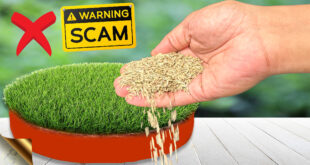In Today’s post, let’s look into 10 tips and tricks on successfully growing healthy looking succulents & cacti and learn 4 different methods of propagating succulents easily.
Whether you are growing succulents & cacti indoors or outdoors, it’s really important to learn how to care for succulents and some very important Do’s and Don’ts. Let us find out how not to kill your succulents and how to keep them healthy and happy.
- MEANING OF SUCCULENT: Succulent means full of juice : juicy. So these are plants with fleshy tissues adapted to water storage. Some random examples of succulents are: Echeverias, Haworthias, Aeoniums, Gasteria, Sedums, donkey’s tail, All varieties of Kalanchoes, Jades and Crassulas, Aloe vera, All types of cactus like fairy castle cactus, Bunny ears cactus, Pincushion cactus, christmas cactus, and, the most beautiful Adeniums or Desert roses.
- SUNLIGHT: Most people think succulents are indoor plants. No doubt they can be grown indoors with proper care or that extra or special care. But succulents love full sunlight and do well with at least five or six hours of direct sun per day. This again depends on the type of succulent. And also, immature succulents or seedlings need lesser sun and have to be gradually introduced to sunlight like the Hardening Off procedure we follow for vegetable seedlings like 1-hour sun exposure for day 1, 2 hours for day, 3 hours for day 3 and so on. We will discuss more useful tips and tricks like how to avoid elongating and ugly growing succulents in the later part of this episode.
- WATERING: This is another very important factor for successful and healthy growth of succulents and cacti. The watering frequency depends on the season of the year. In spring to summer, the succulents grow to their full potential, like any other plant. And in winter season the growth is slowed down and many succulents go into a state of dormancy or inactivity, just like other plants. So, the watering requirement is drastically reduced in winter season. Now, lets talk about how to water, how much to water and how frequently to water. This is very important because overwatering can result in mold and rot and can kill the plant. Succulent and cacti are different from other plants with thick fleshy tissues like leaves or stems are adapted to water storage. So, a lot of water is already stored in these tissues and hence, the water requirement of these plants is very less compared to other plants.
While watering a succulent or a cactus, you need to stick to two rules to prevent over watering and rot. The first rule to follow is the Finger Dip method: Insert your finger to at least one inch into the soil to check the moisture. Water them only if soil is completely dry. You can also dip a moisture meter if you have. And second rule is to avoid water spillage over the fleshy leaves to prevent rot. For this you can use a watering can with a long nozzle to water over the soil and avoid water spillage over the leaves. Then thirdly water it thoroughly and deeply till the water flows out of the drain holes. Generally, in most tropical climates, watering weekly once or max twice a week is sufficient if kept in direct sun. - POTTING SOIL: This is another important factor for healthy succulent growth. Succulents and cacti need a soil mix that drains very quickly, so regular potting soil is not recommended to grow succulents. So, you need to add stuff that helps drain out water very quickly. One such succulent potting mix formula is:
30 to 40% of Garden Soil, 30 to 40% Sand, 10% to 20% pebbles or some small coarse rocks or pumice or perlite if available, 10 to 20% Compost like cowdung or vermicompost, Optionally you can add some 10% Charcoal – small pieces. Do not use cocopeat for succulents especially if you grow them indoors or keep them under indirect sunlight, because it can retain water and might result in mold and rot due to water retention.
- POT SIZE: Choosing the right sized container is also important for healthy growth of succuelnts and again this depends on the type of succulents you are growing. Most succulents have a shallow and delicate root system which do not need too deep containers and it can increase the risk of rot. For most succulents we recommend a wider shallow container for best results, because a wider container with enough space will help in propagation of succulents which produce offsets or babies from sides, which can be separated and grown as independent plants. Also make sure there are multiple drainage holes in the container you choose. You can also grow multiple succulents in a wide container. Make sure you give some spacing between each plant.
- FERTILIZERS: Succulents do not need much fertilizers, but you can give them light feedings like a teaspoon of vermicompost or decomposed cowdung once in 3 months and increase this during the active season – that’s the spring and summer season.
- PEST CONTROL: Mostly affected by mealybugs and the soil by the fungus gnats. You can spray neem oil once in about 15 days as preventive measure or weekly once to get rid of these if already infested. You can even water the succulent once with the same neem oil solution to get rid of fungus gnats. The dose os 5 to 10 ml neem oil per litre of water. The best alternative to kill fungus gnats is 250 ml hydrogen peroxide 3% per litre of water and water the soil.
- CLEANING SUCCULENTS: Wipe off the leaves and spines gently with a damp cloth to get rid of dust and this helps in better photosynthesis.
- REPOTTING: You have to take special care while repotting a succulent, because they are more prone to mold and rot after repotting. To avoid problems, always mix some antifungal powder or some neem cake powder into the potting mix during repotting.
- PROPAGATION: There are several, simple ways to propagate succulents. First method is: Growing from Cuttings: This is best applied in case the succulents have grown too leggy with elongated stems. This elongation of stem happens when there is little sunlight or if kept in indirect light. They elongate their stems for seeking sunlight. As a result they look ugly and take bad bends and turns. So, as discussed – keep them in full direct sun and make it a habit to rotate the containers once in a while to avoid bends and provide uniform sunlight. Well, coming back to propagation, Take the cuttings and leave it in air to dry for 2 days for callous formation – that’s something like wound healing and sealing to prevent rot. Then insert the cutting into a loose draining soil. Just keep the soil moist, do not water it too much. It should start rooting in 2 weeks.
The Second method is Propagating from Leaves: Yes, you can grow succulents from a single leaf. Just remove an actively growing healthy leaf from a mature succulent plant. Make sure you strip from the base, taking out the entire leaf. Leave this to air dry for 2 days and then just place it superficially over the soil. You should see a tiny plant popping out of this leaf with formation of tiny roots.
The Third Method is from Offsets or Babies, which are produced from the mother plant like aloe versa, haworthias and echeverias. Most of the succulents produce these babies which can be separated from the mother plant and planted independently.
The Fourth Method is growing from seeds: This is the slowest method to grow succulents. But if you have the time and patience, give it a try! Seeds of mature plants are located in the seed pod produced after flowering. The seeds can be collected from the pods and planted in a clean seed sowing mix or sand.
 GKVKs – Gardening Tips and Store Gardening Tips and Store
GKVKs – Gardening Tips and Store Gardening Tips and Store



